Instructions for Side by Side Printing
- Print the notecards
- Fold each page in half along the solid vertical line
- Cut out the notecards by cutting along each horizontal dotted line
- Optional: Glue, tape or staple the ends of each notecard together
Activity 6: Examining the Fetal Skull
front 1 1. Are the same skull bones seen in the adult also found in the fetal skull? 2. What is particular about the frontal bone in fetal and adult skulls. | back 1 1. Yes. 2. The frontal bone in fetal skulls is bipartite whereas the adult skull consists of a single bone. |
front 2 1. How does the size of the fetal face compare to its cranium? 2. How big are the maxilla and mandible? | back 2 1. Face is a lot smaller than cranium. 2. Maxilla and mandible are very tiny. |
front 3 How does this compare to the adult skull? | back 3 In adult skull, cranium is proportionately smaller and facial skeleton is proportionally longer. |
front 4 What is the most obvious difference between fetal and adult skeletons, specifically concerning the skull? | back 4 Huge size of the fetal skull relative to the rest of the skeleton. |
front 5 Describe the bones at birth. | back 5 They are incompletely formed. |
front 6 The incomplete skull bones at birth are connected by what? | back 6 Fontanelles |
front 7 What are fontanelles? | back 7 Fibrous membranes. |
front 8 Fontanelles allow the fetal skull to be ____ during birth and allows for ____ in the fetus and infant? | back 8 1. Allow fetal skull to be compressed slightly during birth 2. Allow for brain growth in the fetus and infant |
front 9 When do the fontanelles completely ossify? | back 9 When the child is 1.5 to 2 years old. |
front 10 Some of the cranial bones have conical protrusions. What are these? | back 10 Ossification centers. |
front 11 In a fetal skull, what is peculiar about the frontal bone? | back 11 It is still bipartite. |
front 12 In a fetal skull, what is peculiar about the temporal bone? | back 12 It is incompletely ossified. |
front 13 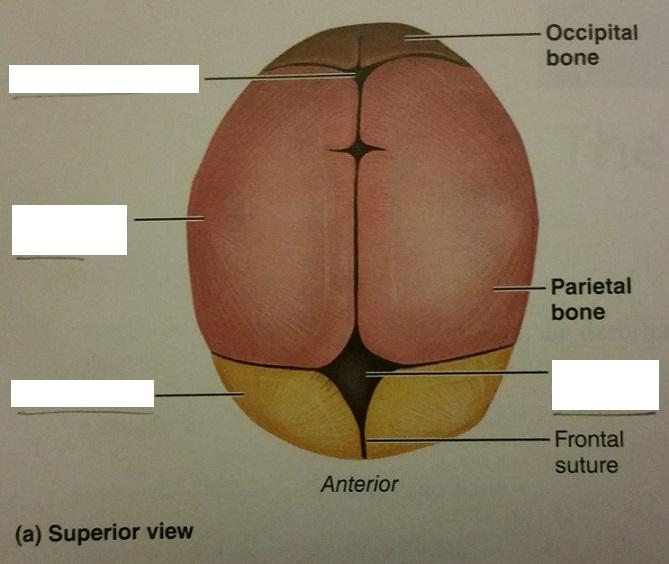 Identify the missing features. | back 13 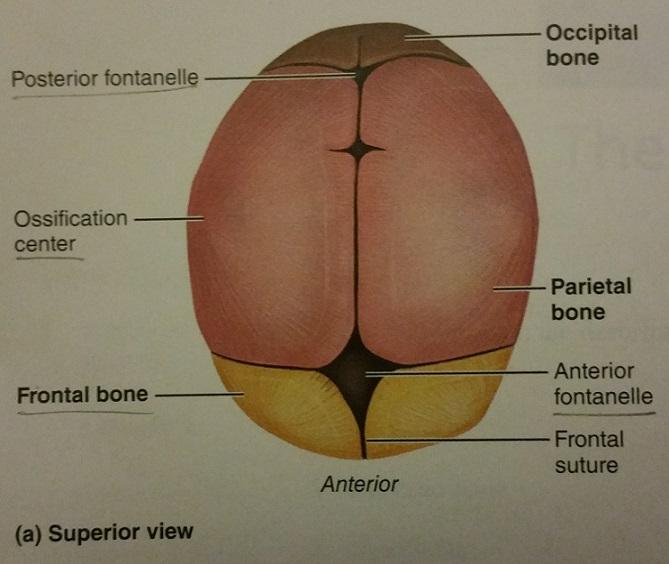 |
front 14 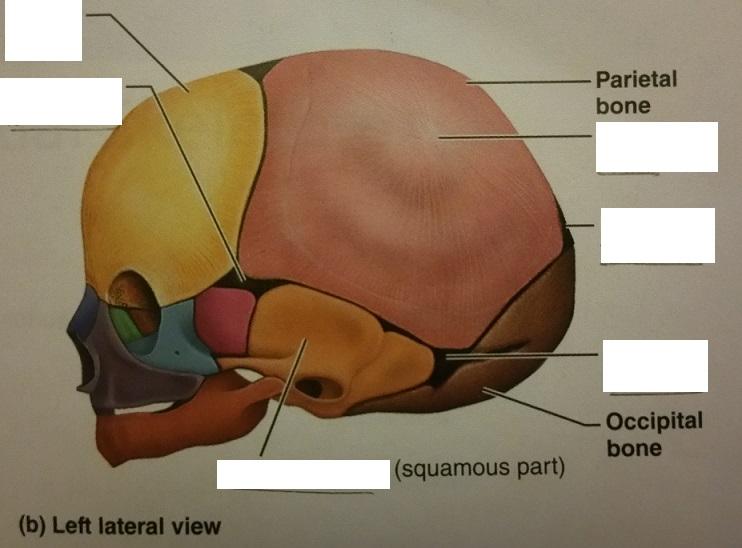 Identify the missing features. | back 14 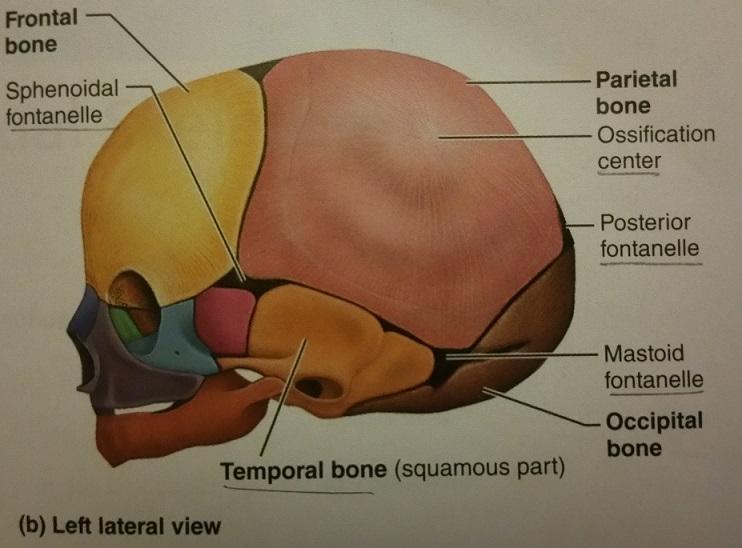 |
front 15 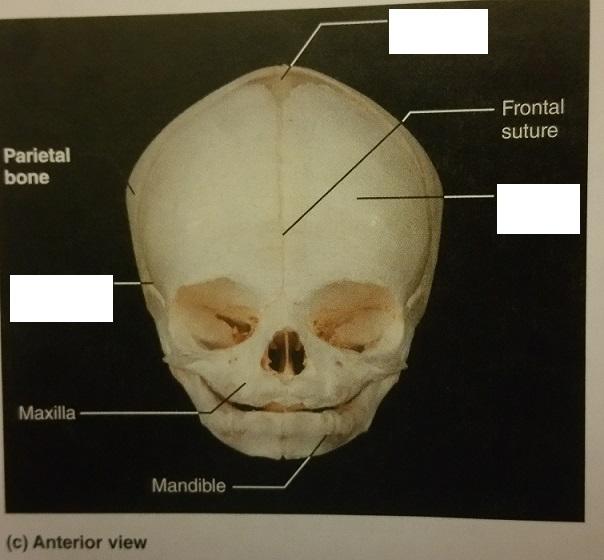 Identify the missing features. | back 15 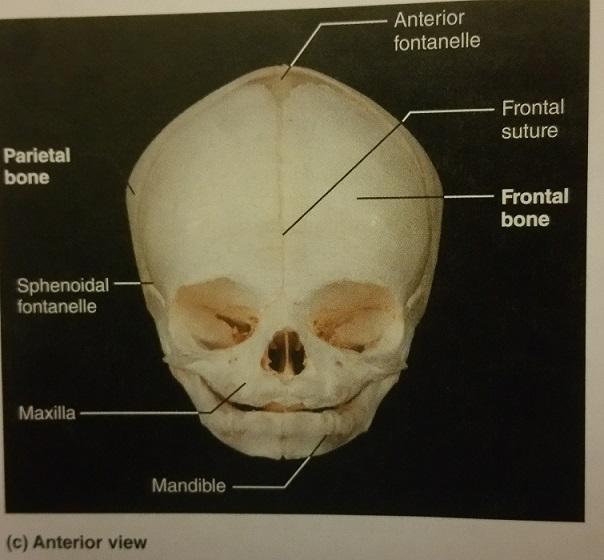 |
front 16 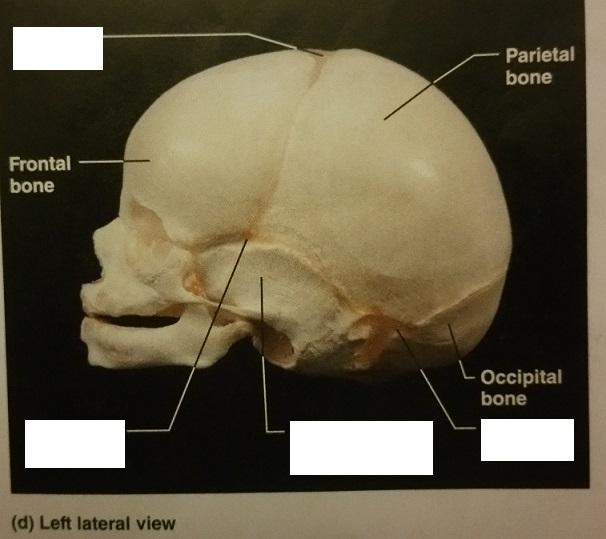 Identify the missing features. | back 16 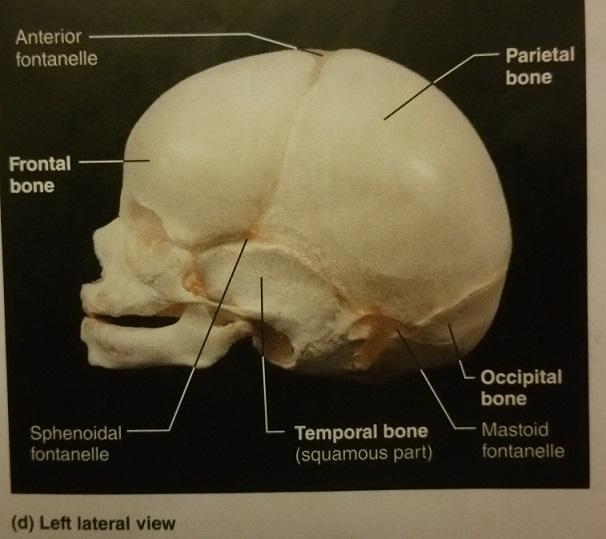 |